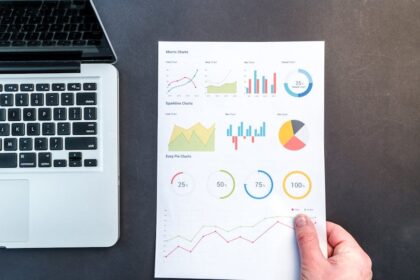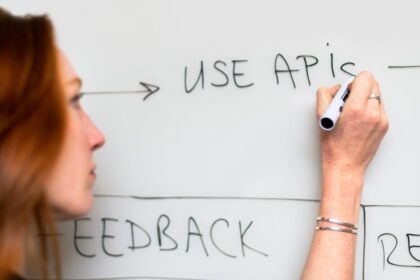Keyword Research and Targeting: The Foundation of On-Page SEO
Before diving into the technical aspects of on-page SEO, understanding your target audience and the keywords they use is paramount. Keyword research forms the cornerstone of any successful on-page optimization strategy. It dictates the language you use, the content you create, and the overall relevance of your website to search engines.
1. Defining Your Niche and Target Audience:
Begin by clearly defining your business niche. What problems do you solve? Who are your ideal customers? Understanding your target audience’s demographics, psychographics, and search behavior is crucial. This understanding informs your keyword research and ensures you’re attracting the right kind of traffic.
2. Brainstorming Seed Keywords:
Start with brainstorming. List all the potential keywords and phrases that relate to your business. These are your “seed keywords.” Think like your customer: what would they type into Google to find your products or services? Don’t limit yourself; generate a broad list. Examples for a hypothetical artisanal coffee shop could include:
- Coffee shop
- Best coffee
- Specialty coffee
- Coffee beans
- Latte art
- Espresso
- Pour over coffee
- Local coffee
- Coffee near me
3. Utilizing Keyword Research Tools:
Leverage keyword research tools to expand your list and gather data on each keyword. Popular tools include:
- Google Keyword Planner: Free tool from Google that provides search volume data, keyword suggestions, and competition insights. Requires a Google Ads account.
- SEMrush: A comprehensive SEO tool suite offering keyword research, competitor analysis, site audits, and more. (Paid)
- Ahrefs: Another powerful SEO toolset with robust keyword research capabilities, backlink analysis, and content exploration features. (Paid)
- Moz Keyword Explorer: Offers keyword suggestions, difficulty scores, organic CTR data, and prioritization metrics. (Paid)
- Ubersuggest: A more affordable option with keyword suggestions, content ideas, and competitor analysis features. (Free and Paid options)
- AnswerThePublic: Visualizes questions people are asking around your seed keywords. Valuable for content ideation and understanding user intent. (Free and Paid options)
4. Analyzing Keyword Metrics:
When using keyword research tools, pay attention to the following metrics:
- Search Volume: The average number of times a keyword is searched for per month. Higher search volume generally indicates greater potential traffic, but also higher competition.
- Keyword Difficulty: A metric (usually on a scale of 0-100) that estimates how difficult it will be to rank for a particular keyword. Consider your website’s authority and resources when targeting keywords with high difficulty scores.
- Cost Per Click (CPC): The average cost of bidding on a keyword in Google Ads. While primarily relevant for paid advertising, CPC can indicate the commercial value of a keyword.
- Search Intent: Understanding the reason behind a user’s search query is crucial. Are they looking for information (informational intent), researching a product (commercial investigation intent), ready to buy (transactional intent), or trying to find a specific website (navigational intent)?
5. Identifying Long-Tail Keywords:
Long-tail keywords are longer, more specific phrases that users search for. They typically have lower search volume but also lower competition. Targeting long-tail keywords can attract highly qualified traffic to your website. For our coffee shop example, long-tail keywords could include:
- “Best pour over coffee in downtown Seattle”
- “Artisanal coffee beans online delivery”
- “Coffee shop with outdoor seating and free wifi near me”
6. Competitor Keyword Analysis:
Analyze your competitors’ websites to identify the keywords they are targeting. Tools like SEMrush and Ahrefs allow you to see which keywords your competitors are ranking for organically. This can uncover valuable keyword opportunities you may have missed.
7. Keyword Clustering and Grouping:
Once you have a comprehensive list of keywords, group them into clusters based on related topics and user intent. This helps you organize your content strategy and create targeted pages for each keyword cluster. For example, you might have a cluster focused on “espresso,” including keywords like “espresso machine,” “espresso beans,” “espresso recipes,” and “how to make espresso.”
8. Prioritizing Keywords:
Prioritize your keywords based on a combination of search volume, keyword difficulty, search intent, and relevance to your business goals. Focus on keywords that offer a good balance between potential traffic and ranking feasibility.
9. Monitoring and Refining Your Keyword Strategy:
Keyword research is not a one-time activity. Continuously monitor your keyword performance and refine your strategy based on data and changing trends. Track your rankings, website traffic, and conversions to identify which keywords are driving the best results.
Optimizing Title Tags and Meta Descriptions: Crafting Compelling Snippets
Title tags and meta descriptions are HTML elements that provide a brief summary of a webpage’s content. They appear in search engine results pages (SERPs) and play a crucial role in attracting clicks and improving your website’s visibility. Optimizing these elements is a critical on-page SEO task.
1. Understanding the Role of Title Tags:
The title tag is the most important on-page SEO element. It’s the title that appears in the SERPs and in the browser tab. Search engines use the title tag to understand the topic of the page and its relevance to search queries.
-
Placement: The title tag is located within the
section of your HTML code.Your Page Title Here -
Importance: A well-optimized title tag can significantly improve your click-through rate (CTR) from the SERPs, leading to increased organic traffic.
2. Best Practices for Title Tag Optimization:
- Keyword Inclusion: Include your primary keyword in the title tag, preferably towards the beginning. This helps search engines understand the page’s focus.
- Character Limit: Keep your title tag within the recommended character limit (around 50-60 characters) to prevent truncation in the SERPs. Google typically displays the first 50-60 characters.
- Uniqueness: Each page on your website should have a unique title tag. Avoid duplicate title tags, as this can confuse search engines and dilute your ranking potential.
- Compelling and Accurate: Write a title tag that is both compelling and accurately reflects the content of the page. Use strong verbs and adjectives to entice users to click.
- Brand Name: Include your brand name in the title tag, especially for your homepage and product pages. This helps build brand awareness and recognition.
- Avoid Keyword Stuffing: Don’t cram too many keywords into your title tag. This can make it look spammy and harm your rankings.
- Example: For our coffee shop page showcasing their signature latte, a good title tag could be: “Best Latte Art in Seattle | [Coffee Shop Name]”
3. Understanding the Role of Meta Descriptions:
The meta description is a short summary of a webpage’s content that appears below the title tag in the SERPs. While it’s not a direct ranking factor, it influences CTR by providing users with more information about the page.
-
Placement: The meta description is also located within the
section of your HTML code. -
Importance: A well-written meta description can persuade users to click on your link, even if you’re not ranking in the top position.
4. Best Practices for Meta Description Optimization:
- Keyword Inclusion: Include your primary keyword and related keywords in the meta description to improve relevance.
- Character Limit: Keep your meta description within the recommended character limit (around 150-160 characters). Google typically displays the first 150-160 characters.
- Uniqueness: Each page on your website should have a unique meta description. Avoid duplicate meta descriptions, as this can reduce CTR.
- Compelling and Action-Oriented: Write a meta description that is compelling and action-oriented. Use strong verbs and a clear call to action (e.g., “Learn more,” “Shop now,” “Get a free quote”).
- Accurate and Relevant: The meta description should accurately reflect the content of the page. Don’t mislead users with false promises.
- Solve the User’s Problem: Address the user’s problem or need in the meta description. Explain how your page can provide a solution.
- Avoid Special Characters: Avoid using special characters in your meta description, as they may not display correctly in the SERPs.
- Example: For the same latte art page, a good meta description could be: “Experience the most stunning latte art in Seattle at [Coffee Shop Name]. Our baristas craft exquisite designs on every cup. Visit us today!”
5. Tools for Optimizing Title Tags and Meta Descriptions:
- Yoast SEO (WordPress Plugin): Provides a user-friendly interface for optimizing title tags and meta descriptions directly within the WordPress editor.
- Rank Math (WordPress Plugin): Another popular WordPress SEO plugin with similar features for optimizing title tags and meta descriptions.
- Screaming Frog SEO Spider: A desktop application that can crawl your website and identify issues with title tags and meta descriptions, such as missing, duplicate, or too-long elements.
- Google Search Console: Allows you to monitor your website’s performance in Google Search, including CTR and impressions for different queries. This data can inform your title tag and meta description optimization efforts.
6. Testing and Iteration:
Continuously test and iterate on your title tags and meta descriptions to improve CTR. Monitor your performance in Google Search Console and track changes in organic traffic. Experiment with different wording, keywords, and calls to action to see what resonates best with your target audience. A/B testing different versions can be beneficial.
Header Tags (H1-H6): Structuring Content for Readability and SEO
Header tags (H1 to H6) are HTML elements used to structure content and create a hierarchy of headings and subheadings on a webpage. They not only improve readability for users but also help search engines understand the content’s organization and relevance. Proper use of header tags is a crucial aspect of on-page SEO.
1. Understanding the Hierarchy of Header Tags:
- H1 Tag: The most important header tag, typically used for the main title of the page. There should generally be only one H1 tag per page.
- H2 Tag: Used for major section headings within the page.
- H3 Tag: Used for subheadings within H2 sections.
- H4-H6 Tags: Used for increasingly granular subheadings within H3 sections.
2. Best Practices for Header Tag Optimization:
-
Use Header Tags to Structure Content: Use header tags to create a clear and logical structure for your content. Break up long blocks of text into smaller, more digestible sections.
-
Include Keywords: Incorporate relevant keywords into your header tags, especially in the H1 and H2 tags. This helps search engines understand the page’s topic.
-
Maintain Hierarchy: Use header tags in the correct order (H1 > H2 > H3 > H4 > H5 > H6). Don’t skip levels (e.g., going from H1 to H3).
-
Make Header Tags Descriptive: Write header tags that are clear, concise, and descriptive of the content in the corresponding section.
-
Use Only One H1 Tag Per Page: While not a strict rule, it’s generally recommended to use only one H1 tag per page to clearly define the page’s main topic.
-
Don’t Overuse Header Tags: Avoid using too many header tags, as this can make your content look cluttered and difficult to read.
-
Avoid Styling Header Tags with CSS Instead of Using Semantic HTML: While you can style header tags with CSS, ensure you’re still using the semantic HTML tags (H1-H6) for proper content structure.
-
Focus on User Experience: Remember that header tags are primarily for improving user experience. Write header tags that are helpful and informative for your readers.
-
Example: On our coffee shop’s “About Us” page:
About [Coffee Shop Name]
Paragraph about the coffee shop's mission and history.
Our Story
Paragraph detailing the founding of the coffee shop.
The Founders
Paragraphs introducing the founders and their backgrounds.
Our Coffee
Paragraph about the sourcing and roasting of the coffee beans.
3. Common Mistakes to Avoid:
- Keyword Stuffing in Header Tags: Avoid stuffing too many keywords into your header tags. This can make them sound unnatural and harm your SEO.
- Using Header Tags for Styling Only: Don’t use header tags solely for styling purposes. Use CSS to style your text, and use header tags to structure your content.
- Skipping Header Tag Levels: Don’t skip levels in the header tag hierarchy. This can disrupt the logical flow of your content and make it difficult for search engines to understand.
- Using the Same H1 Tag on Multiple Pages: Each page on your website should have a unique H1 tag that accurately reflects the page’s content.
- Making Header Tags Too Long: Keep your header tags concise and to the point. Long header tags can be difficult to read and may be truncated in search results.
4. Tools for Auditing Header Tags:
- Screaming Frog SEO Spider: Can crawl your website and identify issues with header tags, such as missing H1 tags, duplicate H1 tags, or incorrect header tag hierarchy.
- SEOquake (Browser Extension): Provides a quick overview of header tags on any webpage.
- Manual Review: The best way to ensure proper use of header tags is to manually review your content and make sure it’s well-structured and easy to read.
5. Integrating Header Tags into Your Content Strategy:
Plan your header tag structure before you start writing your content. This will help you create a clear and logical outline and ensure that your header tags are well-integrated into your overall content strategy. Use your keyword research to inform the selection of keywords for your header tags.
Image Optimization: Enhancing SEO and User Experience
Images are an essential part of any website, enhancing visual appeal and improving user engagement. However, unoptimized images can negatively impact website loading speed and SEO performance. Optimizing images involves reducing file size, using descriptive filenames and alt text, and ensuring they are responsive.
1. Importance of Image Optimization:
- Improved Website Loading Speed: Large image files can significantly slow down your website, leading to a poor user experience and potentially impacting your search engine rankings.
- Enhanced SEO: Search engines can’t “see” images in the same way humans can. They rely on filenames and alt text to understand the content of an image and its relevance to the page.
- Better User Experience: Optimized images load quickly and display properly on all devices, providing a better user experience for your visitors.
- Increased Accessibility: Alt text provides a description of the image for users who are visually impaired or who are using screen readers.
2. Best Practices for Image Optimization:
-
Choose the Right File Format:
- JPEG: Best for photographs and images with complex colors. Offers good compression and relatively small file sizes.
- PNG: Best for images with transparency, logos, and graphics with sharp lines and text. Supports lossless compression, but file sizes can be larger than JPEGs.
- WebP: A modern image format developed by Google that offers superior compression and quality compared to JPEG and PNG. Supported by most modern browsers.
- SVG: A vector image format that is ideal for logos, icons, and other graphics that need to be scalable without losing quality.
-
Compress Images: Reduce the file size of your images without sacrificing too much quality. Use image compression tools to optimize your images before uploading them to your website.
-
Resize Images: Resize your images to the appropriate dimensions for your website. Don’t upload images that are larger than necessary, as this will increase file size and slow down loading speed.
-
Use Descriptive Filenames: Give your images descriptive filenames that include relevant keywords. This helps search engines understand the content of the image.
-
Add Alt Text: Add alt text to all of your images. Alt text provides a description of the image for search engines and users who are visually impaired. Use relevant keywords in your alt text, but avoid keyword stuffing.
-
Use Image Sitemaps: Create an image sitemap to help search engines discover and index your images.
-
Consider Lazy Loading: Implement lazy loading to load images only when they are visible in the viewport. This can improve initial page loading speed.
-
Responsive Images: Ensure your images are responsive and display properly on all devices. Use the
element or thesrcsetattribute in the -
Use a CDN (Content Delivery Network): Use a CDN to serve your images from servers located around the world. This can improve loading speed for users in different geographic locations.
3. Tools for Image Optimization:
-
Image Compression Tools:
- TinyPNG: A free online tool that compresses PNG and JPEG images without significant loss of quality.
- Compressor.io: Another free online tool that supports JPEG, PNG, SVG, and GIF compression.
- ImageOptim (Mac): A free Mac app that optimizes images by removing unnecessary metadata and compressing them.
- Kraken.io: A paid image optimization service that offers advanced compression algorithms and features.
-
Image Resizing Tools:
- Adobe Photoshop: A professional image editing software that can be used to resize and optimize images.
- GIMP: A free and open-source image editing software that is a good alternative to Photoshop.
- Online Image Resizer: Numerous online image resizing tools are available for quick and easy resizing.
-
WordPress Plugins:
- Smush: A popular WordPress plugin that automatically optimizes images when they are uploaded to your website.
- Imagify: Another WordPress plugin that offers image compression, resizing, and WebP conversion.
- ShortPixel: A WordPress plugin that uses lossy and lossless compression to optimize images.
4. Common Mistakes to Avoid:
- Using Large Image Files: Avoid uploading images that are unnecessarily large.
- Ignoring Image Optimization: Neglecting to optimize images can significantly slow down your website.
- Keyword Stuffing in Filenames and Alt Text: Don’t stuff too many keywords into your filenames and alt text.
- Using Generic Filenames: Avoid using generic filenames like “image1.jpg” or “screenshot.png.”
- Forgetting Alt Text: Always add alt text to your images.
- Using Incorrect Image Formats: Choose the correct image format for your specific needs.
5. Integrating Image Optimization into Your Workflow:
Make image optimization a part of your standard workflow. Before uploading any images to your website, resize them, compress them, and add descriptive filenames and alt text. Use a WordPress plugin to automate the image optimization process. Regularly audit your website to identify and optimize any unoptimized images.
Internal Linking: Connecting Pages and Improving Site Navigation
Internal linking is the practice of linking from one page of your website to another. It’s a crucial aspect of on-page SEO that helps search engines understand the structure of your website, discover new content, and distribute PageRank (or link equity) throughout your site. Internal linking also improves user experience by providing visitors with easy navigation and access to related content.
1. Importance of Internal Linking:
- Improved Site Navigation: Internal links help users navigate your website and find the information they’re looking for.
- Enhanced Search Engine Crawlability: Internal links help search engines discover and index new pages on your website.
- Distribution of PageRank: Internal links help distribute PageRank (or link equity) throughout your website, boosting the ranking potential of your pages.
- Increased User Engagement: Internal links can encourage users to explore more content on your website, leading to increased engagement and time on site.
- Contextual Relevance: Internal links can help search engines understand the context of your content and its relevance to other pages on your website.
2. Best Practices for Internal Linking:
- Link to Relevant Pages: Link to pages that are relevant to the content of the page you’re linking from. Avoid linking to unrelated pages, as this can confuse users and search engines.
- Use Descriptive Anchor Text: Use descriptive anchor text (the clickable text of the link) that accurately reflects the content of the page you’re linking to. Avoid using generic anchor text like “click here” or “learn more.”
- Link Deeply: Link to pages that are several levels deep in your website’s hierarchy, not just to your homepage or top-level pages.
- Use a Variety of Anchor Text: Use a variety of anchor text, including exact match keywords, partial match keywords, and branded keywords.
- Add Internal Links Naturally: Integrate internal links naturally into your content. Don’t stuff too many links into a single paragraph.
- Link from High-Authority Pages: Link from pages that have high authority (e.g., pages with lots of backlinks) to pages that you want to rank higher in search results.
- Use Contextual Links: Place internal links within the body of your content, where they are most likely to be seen and clicked by users.
- Use a Logical Site Structure: Organize your website into a logical hierarchy of pages and categories. This will make it easier to create internal links.
- Update Old Content: Regularly update your old content and add new internal links to relevant pages.
3. Strategies for Effective Internal Linking:
- Identify Relevant Pages: Use a spreadsheet or a tool like Screaming Frog to identify all the pages on your website that are relevant to each other.
- Create a Linking Plan: Create a linking plan that outlines which pages you will link to from each page on your website.
- Use Cornerstone Content: Identify your most important content (cornerstone content) and link to it from all relevant pages on your website.
- Use “Related Posts” or “Recommended Reading” Sections: Add “Related Posts” or “Recommended Reading” sections to the bottom of your pages to suggest other relevant content to your visitors.
- Use Breadcrumb Navigation: Implement breadcrumb navigation to help users understand their location on your website and easily navigate to higher-level pages.
4. Common Mistakes to Avoid:
- Linking to Irrelevant Pages: Linking to pages that are not relevant to the content of the page you’re linking from.
- Using Generic Anchor Text: Using generic anchor text like “click here” or “learn more.”
- Keyword Stuffing in Anchor Text: Stuffing too many keywords into your anchor text.
- Linking Too Much or Too Little: Linking too much or too little can be detrimental to your SEO efforts.
- Ignoring NoFollow Links: Pay attention to nofollow links within your internal linking structure.
5. Tools for Internal Link Auditing and Optimization:
- Screaming Frog SEO Spider: Can crawl your website and identify broken links, redirect chains, and opportunities for internal linking.
- Ahrefs: A comprehensive SEO toolset that includes features for analyzing internal link structure and identifying linking opportunities.
- SEMrush: Another powerful SEO toolset with features for analyzing internal link structure and identifying linking opportunities.
- Google Search Console: Provides data on internal links and crawl errors on your website.
6. Monitoring and Measuring Internal Linking Performance:
Track the performance of your internal links using Google Analytics and Google Search Console. Monitor metrics such as page views, bounce rate, and time on site for pages that you have linked to internally. This data can help you refine your internal linking strategy and improve your website’s overall SEO performance.
URL Structure Optimization: Creating SEO-Friendly URLs
A well-structured URL is not only user-friendly but also helps search engines understand the content of the page. Optimizing your URL structure is an important aspect of on-page SEO. SEO-friendly URLs are typically short, descriptive, and include relevant keywords.
1. Importance of URL Structure Optimization:
- Improved User Experience: Clear and concise URLs are easier for users to understand and remember.
- Enhanced Search Engine Crawlability: Search engines use URLs to understand the structure of your website and the content of each page.
- Increased Click-Through Rate: Descriptive URLs can improve click-through rates in search results.
- Better Anchor Text: URLs are often used as anchor text when other websites link to your content.
- Improved Website Organization: A well-structured URL structure can help you organize your website and make it easier to manage.
2. Best Practices for URL Structure Optimization:
- Use Descriptive Keywords: Include relevant keywords in your URLs to help search engines understand the content of the page.
- Keep URLs Short: Shorter URLs are easier to read and remember. Aim for URLs that are less than 75 characters.
- Use Hyphens to Separate Words: Use hyphens (-) to separate words in your URLs. Avoid using underscores (_) or other special characters.
- Use Lowercase Letters: Use lowercase letters in your URLs. This will help prevent duplicate content issues.
- Avoid Stop Words: Remove stop words (e.g., “a,” “an,” “the,” “of,” “and”) from your URLs, as they don’t add any value.
- Use a Logical Hierarchy: Structure your URLs to reflect the hierarchy of your website.
- Use Canonical URLs: Use canonical URLs to tell search engines which version of a page is the preferred version.
- Avoid Dynamic URLs: Avoid using dynamic URLs that contain parameters and session IDs. These URLs are difficult to read and understand.
- Use HTTPS: Use HTTPS to secure your website and encrypt your URLs.
3. Examples of SEO-Friendly and Non-SEO-Friendly URLs:
- SEO-Friendly:
www.coffeeshop.com/menu/espresso-drinkswww.coffeeshop.com/blog/how-to-make-latte-artwww.coffeeshop.com/locations/seattle
- Non-SEO-Friendly:
www.coffeeshop.com/page?id=123www.coffeeshop.com/category/coffee_shopwww.coffeeshop.com/product/product-12345
4. Implementing URL Structure Optimization:
- Plan Your URL Structure: Before you start creating content, plan your URL structure. This will help you ensure that your URLs are consistent and logical.
- Use a Content Management System (CMS): Most CMS platforms (e.g., WordPress, Drupal, Joomla) allow you to customize your URLs.
- Use a URL Rewriting Tool: If you are using a static website, you can use a URL rewriting tool to create SEO-friendly URLs.
- 301 Redirects: When you change a URL, use a 301 redirect to redirect users and search engines to the new URL.
5. Common Mistakes to Avoid:
- Using Long and Complicated URLs: Avoid using URLs that are too long and complicated.
- Using Stop Words in URLs: Avoid using stop words in your URLs.
- Using Uppercase Letters in URLs: Avoid using uppercase letters in your URLs.
- Changing URLs Without Redirects: Don’t change URLs without implementing 301 redirects.
- Ignoring Canonical URLs: Neglecting to use canonical URLs can lead to duplicate content issues.
6. Tools for URL Structure Analysis:
- Screaming Frog SEO Spider: Can crawl your website and identify URL structure issues, such as long URLs, dynamic URLs, and missing canonical URLs.
- Google Search Console: Provides data on crawl errors and URL structure issues on your website.
- SEOquake (Browser Extension): Provides a quick overview of the URL structure of any webpage.
7. Maintaining a Consistent URL Structure:
Once you have established a URL structure, it’s important to maintain consistency. Avoid making unnecessary changes to your URLs, as this can confuse users and search engines. If you do need to change a URL, be sure to implement a 301 redirect.










